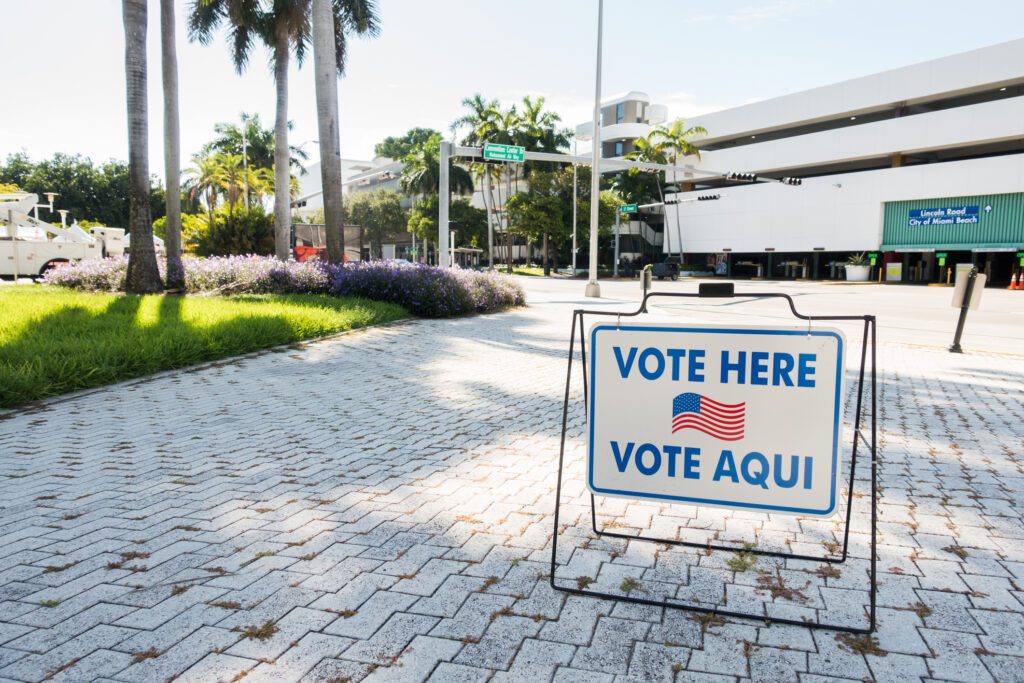If Republicans Now Depend on Low-Propensity Voters, What Tactics Should They Embrace?
Republicans may need to embrace, in a big way, the kinds of distributed-organizing tools (virtual phone banks, peer-to-peer texting, relational technology) Democrats have learned to use even in local races.


Image Credit: tovfla
Donald Trump changed plenty in America, including who turns out to vote and when. For years, high-turnout elections generally favored Democrats, while Republicans often benefited when more people stayed home. The Democratic coalition included a large number of low-propensity voters, including many working-class voters, and when they didn’t show up at the polls in years like 2010 and 2014, the party lost.
By contrast, big parts of the Republican coalition voted more consistently. Country club Republicans, small business owners, older voters, conservative Christians and others on the right turned out year after year. Maybe they were more invested in the political and economic system, or just passionate about a cause. Either way, most of us who grew up in politics in the last few decades probably assumed that this pattern of voter distribution was a given, unlikely to change in a significant way except in rare cases.
The 2020 elections showed how out-of-date that assumption was. Turnout was extremely high, but pollsters missed a whole bunch of Trump supporters who didn’t fit the standard likely voter models. Just as they had in 2016, Democrats lost to candidates they expected to beat, and Trump came very close to winning in states he needed to stay in the White House. What happened? The electorate had changed.
Go back far enough and you’ll see how Republicans have picked away at the base of Democratic white, working-class and middle-class voters at least since the rise of Reagan Republicans in the 1980s. Meanwhile, in the first decade of this century, Democrats lured away college-educated and upscale voters disgusted by the Bush administration’s perceived failings in places like Iraq, Afghanistan and New Orleans.
The dozen years since Barack Obama was elected only intensified these trends. After the Tea Party and the rise of Trump, Republicans have come to “own” a big swath of the kind of voters Democrats long depended on to win — less invested in the system, more distrustful of elites, and less likely to vote unless highly motivated. With defeats in 2018 (the last time Trump wasn’t on the ballot) in mind, how can Republican campaigns get these voters to the polls next year?
In part, they can rely on conservative media to keep potential supporters riled up, though political red meat — and the extreme actions it can inspire — risk inflaming the left and alienating the middle. Republicans can also try to meet potentially reluctant voters face to face via field outreach. As a speaker at the conference attached to last week’s Reed Awards noted, Republicans seem to do particularly well at “network” organizing, for instance mobilizing supporters and volunteers through churches. But low-propensity voters in the U.S. tend to be among the least connected people in the country, less likely to belong to a church or community group. How to contact them?
I suspect that Republicans will need to build out a robust infrastructure to mobilize potential voters one at a time. Of course, many individual Republican campaigns already do this, but they’ll need a revolution in scale if they want to turn out the parts of their new coalition who need that extra push to get to the polls across the country.
Who’s done this recently? The Democrats, of course. Since 2004, the party has been building a common data infrastructure to help their campaigns up and down the ballot reach individual voters through calls, texts, in-person visits, digital advertising and more. Obama’s campaigns popularized the idea of a “turnout score,” which combined an individual voter’s assessed likelihood of voting for a Democrat together with factors that might make them more or less likely to turn out. The prime targets? People with a high chance of voting for a Democrat, but a low chance of actually showing up — i.e., low-propensity Dems.
Assuming Republicans hold on to their new base in the years to come, they’ll likely need to embrace a similar field-minded approach, and not just for high-profile statewide or presidential campaigns. Some of the real strengths of an integrated outreach system may only show up after years of widespread use, as volunteers and field staff input the results of conversations held via phone or in person and build up portraits of each voter. Down-ballot campaigns won’t just depend on the system — they’ll functionally help build it as they use it.
To reach these low-propensity voters at scale, campaigns will likely need targeted media and volunteers. Digital advertising can deliver specific messages to relatively small groups of voters, as Trump demonstrated in 2016, and careful targeting can reduce the risk of blowback. But reluctant voters often need an extra nudge from, say, a conversation with a volunteer. As a result, Republicans may need to embrace, in a big way, the kinds of distributed-organizing tools (virtual phone banks, peer-to-peer texting, relational technology) Democrats have learned to use even in local races.
Of course, the best field programs usually boost turnout by single-digit percentages, so Republicans will need to be close enough in the first place for targeted outreach to make the difference between victory and defeat. And naturally, they’ll need political messages that actually appeal to their new base. Though when you start saying an election’s rigged in your opponent’s favor before Election Day dawns, you might be telling your voters not to bother. Just a hint.
Colin Delany is founder and editor of the award-winning website Epolitics.com, author of the 2021 edition of “How to Use the Internet to Change the World – and Win Elections,” a twenty-five-year veteran of online politics and a perpetual skeptic. See something interesting? Send him a pitch at cpd@epolitics.com.
